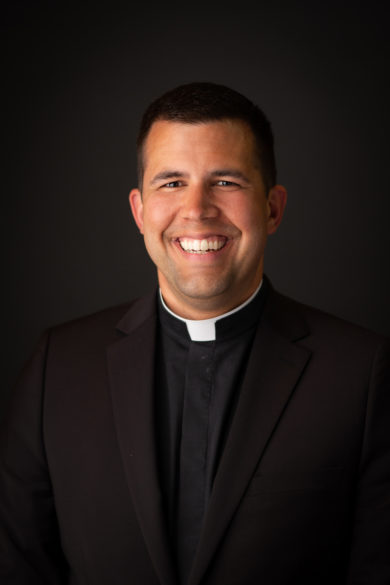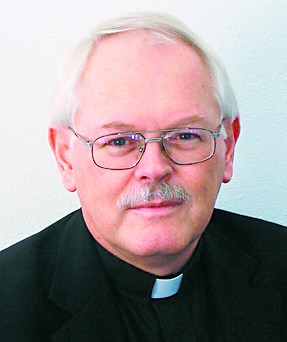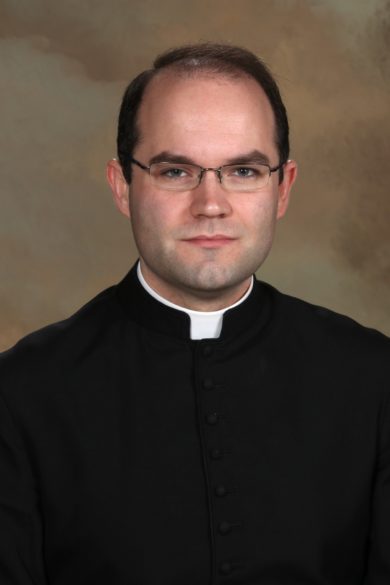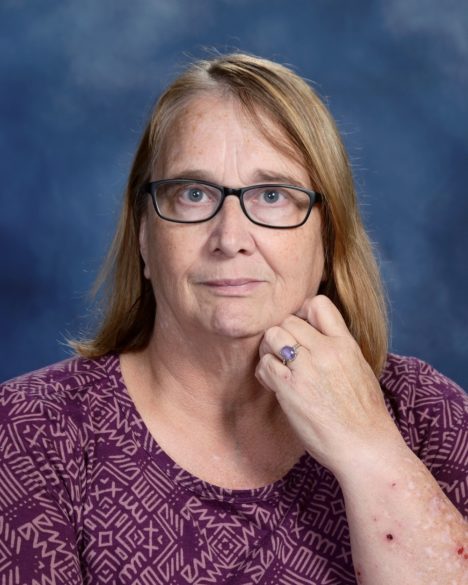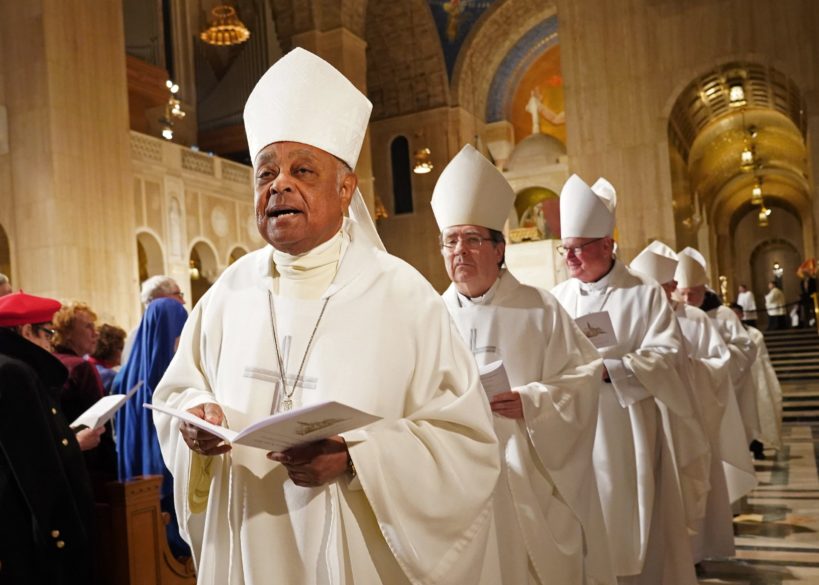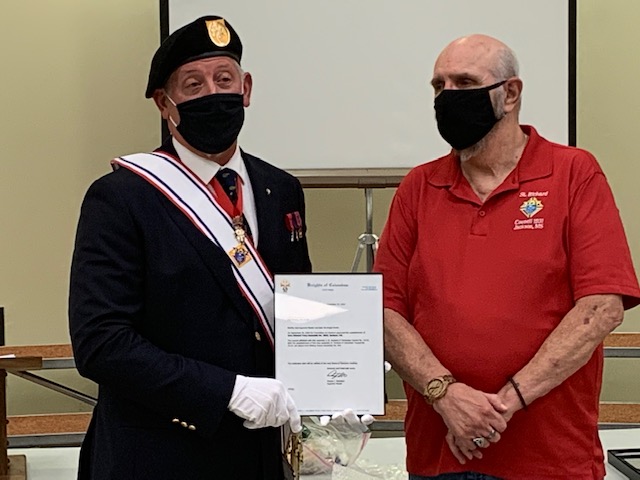Nos inspira a recordar que esta Nube de Testigos
que proviene de todas las naciones y pueblos,
jóvenes y viejos, de todas las formas y tamaños,
está viva entre nosotros como testigos e intercesores.
Por Obispo Joseph R. Kopacz, D.D.
Durante todo el mes de noviembre y bien entrado el Adviento, la Palabra de Dios ofrece una amplia oportunidad para contemplar nuestro destino final como seres humanos, pero especialmente como cristianos. Podemos modificar la luz y la oscuridad durante una hora con el horario de verano, pero no podemos detener el avance del tiempo, que marcha inevitablemente hacia los brazos de la eternidad. Más crudamente, el salmista nos asegura, “¡Nadie puede vivir y no morir nunca! ¡Nadie puede librarse del poder de la muerte!” (Salmo 89:48)
Desde marzo, la pandemia ha machacado esta realidad con la pérdida de la normalidad, la pérdida de vidas y, trágicamente, en demasiadas ocasiones, la separación y el aislamiento forzados de los seres queridos al morir. Sin disminuir el sufrimiento y la agonía en todos los frentes, la iglesia proclama fielmente la esperanza eterna en el conocimiento de que toda la creación, los tiempos y las estaciones, y la vida eterna por venir, pertenecen al Cordero de Dios, el Señor crucificado y resucitado. Esto se pronuncia maravillosamente cuando se prepara el Cirio Pascual en la Vigilia Pascual.
Cristo ayer y hoy, Principio y Fin, Alfa y Omega. Suyos son los tiempos y las edades. A él sea la gloria y el dominio por todas las edades de la eternidad. Amén.

En la fiesta de Todos los Santos, la iglesia proclama el poder de la memoria, el potencial en el momento presente y la esperanza de la gloria futura. El pasado y el futuro convergen en la visión de la atemporalidad de San Juan en el Libro del Apocalipsis que revela a los santos en la gloria, una multitud demasiado numerosa para contar, vestidos de blanco, sus vestiduras lavadas en la sangre del Cordero.
Nos inspira a recordar que esta Nube de Testigos que proviene de todas las naciones y pueblos, jóvenes y viejos, de todas las formas y tamaños, está viva entre nosotros como testigos e intercesores. Este es el desfile de campeones del que nos jactamos y que nos ofrecen el premio máximo de nuestra ciudadanía en el cielo.
En la imaginería tradicional que se remonta al Nuevo Testamento (Efesios 6), somos la iglesia militante que debe pelear la buena batalla de la fe y terminar la carrera (1 Timoteo 6). Hay muchas formas de expresar nuestra dignidad y destino en el Señor, y en la Fiesta de Todos los Santos, escuchamos de la primera carta de Juan en el Nuevo Testamento. “Queridos hermanos, ya somos hijos de Dios. Y aunque no se ve todavía lo que seremos después, sabemos que cuando Jesucristo aparezca seremos como él, porque lo veremos tal como es. 3 Y todo el que tiene esta esperanza en él, se purifica a sí mismo, de la misma manera que Jesucristo es puro.”(1 Juan 3:2-3)
¿Cuáles son exactamente las actitudes y acciones que caracterizan a los hijos de Dios en este mundo? Jesús las desarrolla a lo largo del Sermón del Monte (Mateo cap. 5-7), comenzando con las Bienaventuranzas, el Evangelio para Todos los Santos. Sus palabras resonarán para siempre. “Bienaventurados los pobres de espíritu, los de corazón limpio, los pacificadores, los mansos, los misericordiosos, los afligidos, los que tienen hambre y sed de justicia, los perseguidos por hacer lo que es justo y todos los que soportan persecución, hostilidad, rechazo por el por el nombre.”
¡Ah!, ¿cuán bendecido puede ser uno? Jesús no lo dice solo pidiendo simplemente algo como ‘…aguanta porque esto también pasará,’ más bien como “regocíjense y estén orgullosos, porque su recompensa será grande en los cielos.”
Como suele ocurrir con la sabiduría de Dios, tenemos que sumergirnos en las palabras del Señor, su sabiduría eterna, una y otra vez, para descubrir o redescubrir la misericordia, la paz y la plenitud de vida que él promete, ahora y siempre.
Desde hace meses, el mundo político nos ha envuelto en mensajes y con direcciones divergentes para nuestra sociedad. A pesar de todo, sabemos que nuestra ciudadanía requiere nuestra participación en las urnas y mucho más, por nuestro compromiso con el bien común todos los días del año. Sin duda, en ocasiones, nuestra ciudadanía en el cielo va a entrar en conflicto con nuestra ciudadanía en la tierra, y en esos momentos sabremos dónde mora nuestra lealtad. Creo que los valores revelados por el Señor para todos los ciudadanos del cielo también serían una bendición para el mundo y nuestra nación.
A tiempo y fuera de tiempo, seremos la sal de la tierra, la luz del mundo y la levadura del pan de la vida diaria. Que el tiempo asignado que tenemos en este mundo sea un regalo para la gloria de Dios.

